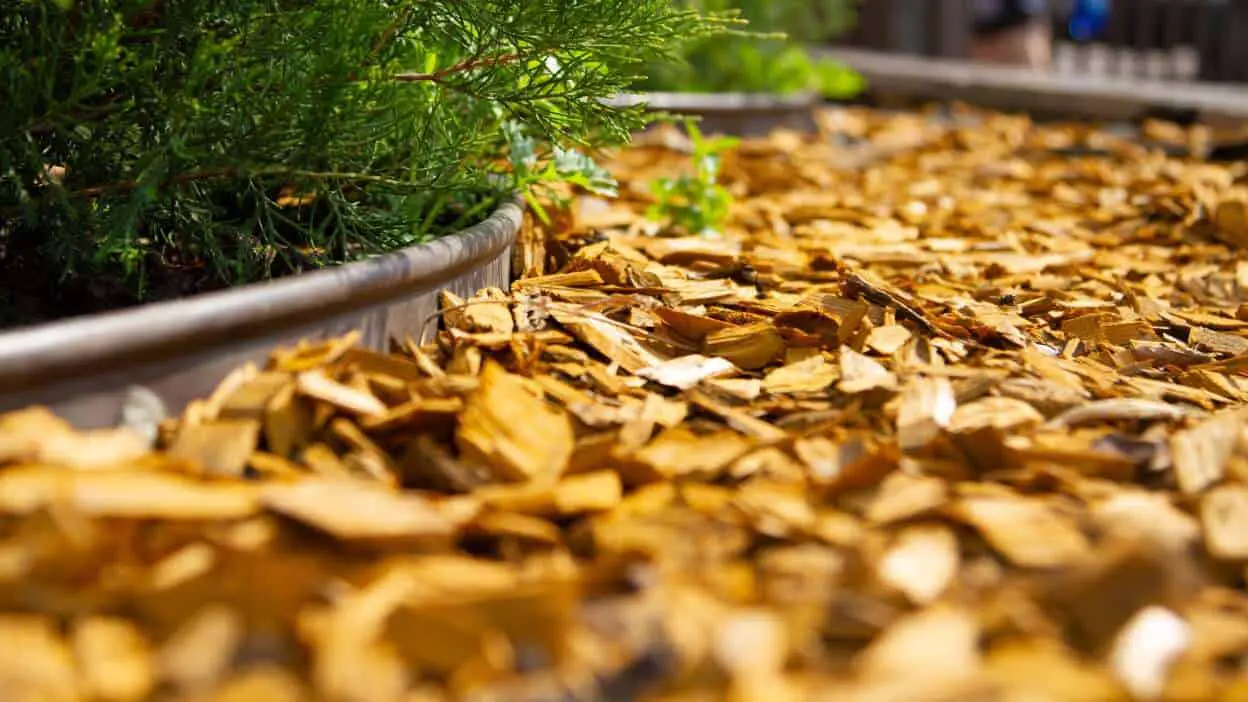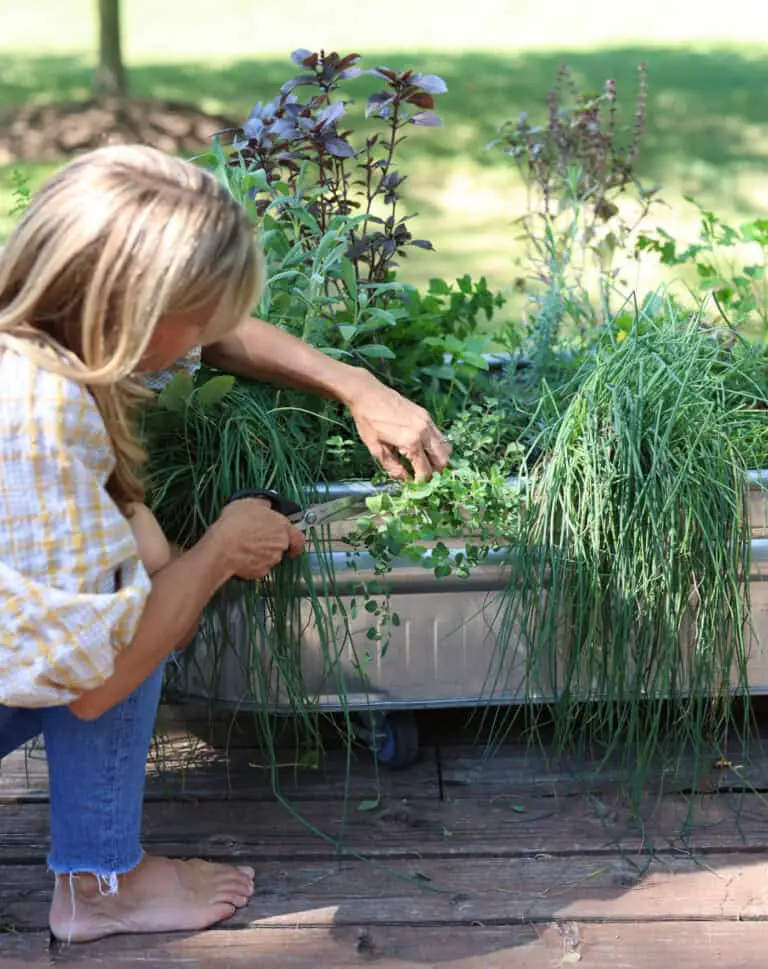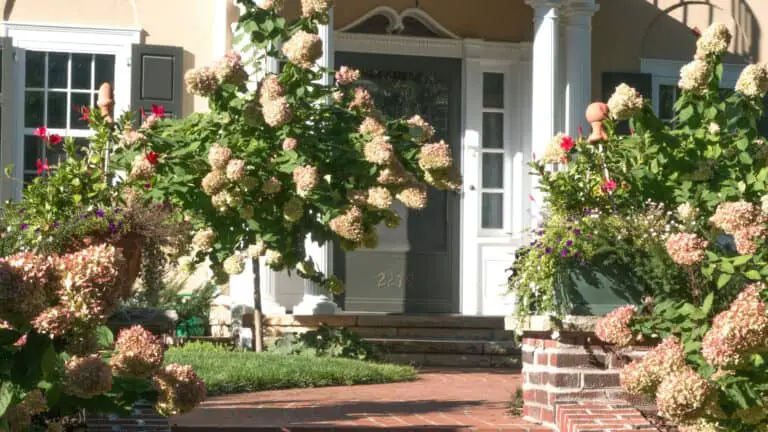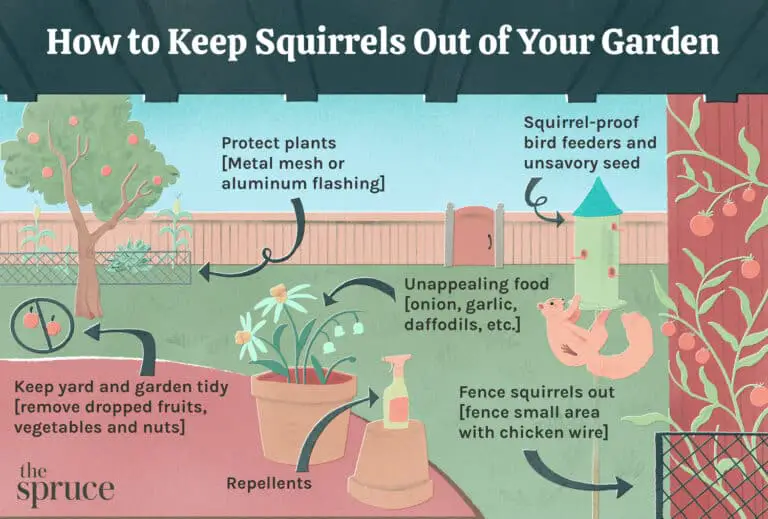Its Time To Get Wood Chips For Your Yard: Boost Curb Appeal Now
It’s time to get wood chips for your yard. They offer numerous benefits for your garden and landscape.
Wood chips provide an excellent mulch option for your yard. They help retain soil moisture, reduce weed growth, and improve soil health. Wood chips also add an aesthetic appeal to your garden, giving it a neat and tidy look. These benefits make wood chips a great choice for both novice and experienced gardeners.
Additionally, wood chips can help in erosion control and provide a habitat for beneficial insects. With their numerous advantages, integrating wood chips into your yard maintenance routine can enhance your garden’s health and appearance, making it a worthwhile investment.
Why Wood Chips
Wood chips can transform your yard. They are simple yet effective. Wood chips offer a range of benefits for gardens and landscapes.
Benefits Of Wood Chips
Wood chips provide many advantages. They help retain soil moisture. This means you water your plants less.
They also control weeds. A thick layer of wood chips stops weeds from growing. This keeps your garden clean and tidy.
Wood chips improve soil health. As they break down, they add nutrients to the soil. This makes your plants healthier and stronger.
Wood chips also look good. They give your garden a neat and natural look. They come in different colors to match your style.
Types Of Wood Chips
There are different types of wood chips. Each type has its own benefits.
- Hardwood Chips: These chips are dense and last longer. They are good for pathways and heavy-use areas.
- Softwood Chips: These chips break down faster. They are great for garden beds and around trees.
- Colored Wood Chips: These chips are dyed in various colors. They add a decorative touch to your garden.
- Natural Wood Chips: These are untreated and chemical-free. They are safe for organic gardens.
Choosing the right wood chips depends on your needs. Hardwood chips are durable. Softwood chips enrich the soil. Colored chips add beauty. Natural chips are eco-friendly.
Use the table below to compare the types:
| Type | Durability | Best Use |
|---|---|---|
| Hardwood Chips | High | Pathways |
| Softwood Chips | Medium | Garden Beds |
| Colored Wood Chips | Varies | Decoration |
| Natural Wood Chips | Medium | Organic Gardens |
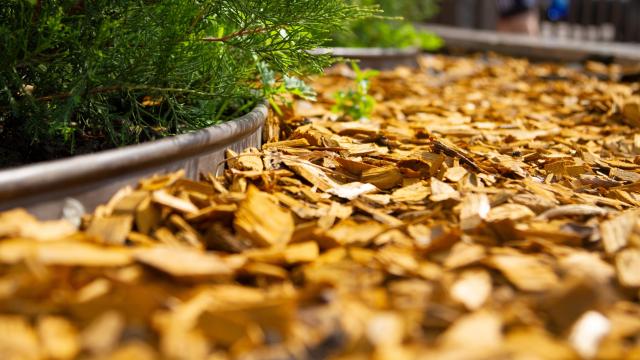
Credit: www.lifehacker.com.au
Choosing The Right Wood Chips
Selecting the perfect wood chips for your yard can transform your outdoor space. It can improve the soil, retain moisture, and add beauty. Learn about color options, size, and texture to find the best match for your needs.
Color Options
Wood chips come in various colors. Each color can suit different landscapes. The most common colors include:
- Natural Brown: Ideal for a rustic, natural look.
- Red: Perfect for adding warmth and a pop of color.
- Black: Great for a modern, sleek appearance.
Choose a color that complements your garden plants and home exterior. Darker shades can make green plants stand out. Lighter colors can brighten up shaded areas.
Size And Texture
Wood chips vary in size and texture. Each type serves different purposes. Here’s a quick guide:
| Size | Texture | Best Use |
|---|---|---|
| Large Chips | Coarse | Walkways, playgrounds |
| Medium Chips | Moderate | Mulching, general landscaping |
| Fine Chips | Soft | Flower beds, vegetable gardens |
Large chips can last longer and are less likely to blow away. Fine chips decompose faster and enrich the soil. Medium chips offer a balance of durability and soil improvement.
Preparing Your Yard
Before spreading wood chips, you need to prepare your yard. A well-prepared yard ensures that wood chips provide maximum benefits. Follow these simple steps to get your yard ready.
Clearing The Area
Start by removing any debris from your yard. This includes rocks, sticks, and trash. Use a rake to gather leaves and other organic material.
- Remove large rocks and stones.
- Pick up sticks and branches.
- Dispose of any trash.
Soil Preparation
After clearing the area, focus on preparing the soil. Healthy soil promotes better growth and stability for your plants.
First, test the soil pH. You can buy a simple test kit from a garden store. Ideal pH levels for most plants range between 6.0 and 7.0.
If your soil is too acidic or alkaline, add amendments. Lime can raise pH, while sulfur can lower it. Mix these amendments into the soil thoroughly.
| Soil Amendment | Purpose |
|---|---|
| Lime | Raises soil pH |
| Sulfur | Lowers soil pH |
Next, loosen the soil to a depth of 6 inches. Use a shovel or garden fork for this task. Breaking up the soil improves aeration and allows roots to penetrate easily.
Finally, add a layer of compost. Compost enriches the soil with nutrients. Spread the compost evenly and mix it into the top layer of soil.
- Test soil pH.
- Add amendments if needed.
- Loosen the soil.
- Incorporate compost.
With these steps, your yard will be ready for wood chips. This preparation ensures a healthy and vibrant yard.
Application Techniques
Wood chips are a fantastic addition to any yard. They help with moisture retention and weed control. Understanding proper application techniques is crucial for maximizing their benefits. Below are some tips on how to apply wood chips effectively.
Spreading Methods
There are several ways to spread wood chips in your yard. You can use a rake, shovel, or even your hands. The key is to distribute them evenly.
- Rake: Use a rake for large areas. This tool helps spread wood chips evenly.
- Shovel: A shovel is ideal for transporting wood chips from a pile to the yard.
- Hands: For smaller areas, use your hands for more precise placement.
Layer Thickness
The thickness of the wood chip layer is important. A proper layer will ensure optimal benefits.
| Area Type | Recommended Thickness |
|---|---|
| Flower Beds | 2-3 inches |
| Paths | 3-4 inches |
| Garden Areas | 2-3 inches |
Ensure you do not pile wood chips against plant stems. This can cause rot. Allow a small gap around plants for air circulation.
Maintaining Wood Chips
Maintaining wood chips in your yard is key to a beautiful landscape. Well-maintained wood chips can enhance the look and health of your garden. Let’s explore how to keep your wood chips in top shape.
Regular Raking
Regular raking is essential for maintaining wood chips. Raking helps keep the chips even and prevents clumping. Uneven wood chips can lead to bare spots in your yard. Use a garden rake for this task.
Steps for regular raking:
- Start at one end of the yard.
- Rake towards the other end in straight lines.
- Keep a consistent pressure on the rake.
Raking also helps remove debris and fallen leaves. This keeps the area clean and fresh. Aim to rake your wood chips once a week.
Replacing Old Chips
Wood chips break down over time. Replacing old chips ensures your yard looks fresh. Old, decomposed chips can harm your plants by changing the soil’s pH.
Steps to replace old wood chips:
- Remove the old chips using a shovel.
- Place the old chips in a compost bin.
- Spread new wood chips evenly.
Check the depth of the chips. The ideal depth is 2-3 inches. This depth helps retain moisture and prevent weeds. Replace wood chips every 6-12 months.
| Task | Frequency |
|---|---|
| Raking | Weekly |
| Replacing Old Chips | Every 6-12 Months |
By following these tips, your yard will look amazing all year round. Keep your wood chips well-maintained for a lush and healthy garden.
Cost Considerations
When considering wood chips for your yard, understanding cost is crucial. This section helps you explore budget-friendly options and long-term savings associated with wood chips.
Budget-friendly Options
Wood chips come in many types and prices. Here are some affordable options:
- Recycled Wood Chips: These are often free or very cheap.
- Local Tree Services: Some companies offer free wood chips.
- Municipal Yard Waste Programs: Cities sometimes provide free or low-cost wood chips.
Choosing these options can significantly reduce your initial costs. Always check for availability in your area.
Long-term Savings
Wood chips not only have an initial cost but also offer long-term savings:
- Reduced Weed Growth: Less spending on weed control.
- Moisture Retention: Saves on water bills.
- Soil Improvement: Reduces the need for fertilizers.
Investing in wood chips leads to cost savings over time. This makes them a wise choice for any yard.
| Benefit | Cost Savings |
|---|---|
| Reduced Weed Growth | Less spending on weed control |
| Moisture Retention | Saves on water bills |
| Soil Improvement | Reduces the need for fertilizers |
Wood chips can offer great value for your yard in both short and long terms.
Environmental Impact
Wood chips in your yard can have a big environmental impact. They help with sustainability, soil health, and more. Here, we will explore these benefits.
Sustainability
Using wood chips promotes sustainability. Wood chips come from tree trimmings or dead trees. This reduces the need for new materials. It also helps with waste reduction. Reusing wood is better for the planet.
Wood chips also decompose naturally. This means less pollution. They break down into the soil, returning nutrients to the earth. This is a great way to help the environment.
Soil Health
Wood chips improve soil health. They add organic matter to your yard. This makes the soil rich and healthy.
- Wood chips help retain moisture.
- They reduce soil erosion.
- They provide a habitat for beneficial insects.
Healthy soil means healthier plants. Your garden will thrive with wood chips.
| Benefit | Description |
|---|---|
| Moisture Retention | Wood chips keep the soil moist longer. |
| Soil Erosion | They prevent the soil from washing away. |
| Insect Habitat | They attract good insects that help plants. |
Common Mistakes
Using wood chips in your yard can greatly enhance its beauty. But, many homeowners make common mistakes that can reduce their effectiveness. Understanding these mistakes can help you get the most out of your wood chips.
Overuse Of Chips
One of the most common mistakes is the overuse of wood chips. Applying too many chips can suffocate plants and prevent water from reaching the soil. It’s important to apply a moderate layer.
- Use a layer of 2-3 inches of chips.
- Too many chips can block water and air.
- Thick layers can also attract pests.
A balanced approach ensures your plants thrive and your yard looks beautiful.
Ignoring Weed Barriers
Another mistake is ignoring weed barriers. Without a weed barrier, weeds can grow through the chips and ruin your yard’s appearance. Using a weed barrier can help prevent this.
- Lay down a weed barrier before applying chips.
- Ensure the barrier covers the entire area.
- Secure the barrier to prevent it from moving.
Using a weed barrier can save you time and effort in the long run.
Boosting Curb Appeal
Adding wood chips to your yard can transform its look. They offer a natural touch that enhances your garden’s beauty. Your home will stand out in the neighborhood. Let’s explore how to use wood chips to boost your curb appeal.
Complementing Your Landscape
Wood chips blend well with various landscape styles. They come in different colors and sizes, so you can match them with your plants and garden features. This creates a harmonious and attractive look.
Here are some ways wood chips complement your landscape:
- Mulching: Protects plant roots and retains soil moisture.
- Pathways: Creates clear and tidy walking paths.
- Accent Areas: Highlights specific garden areas and features.
Seasonal Updates
Wood chips are versatile for seasonal changes. In spring, they help plants grow by keeping the soil warm. In summer, they reduce weed growth and keep the ground cool.
Consider these seasonal updates:
- Spring: Refresh the chips to enhance plant growth.
- Summer: Add more chips to suppress weeds.
- Fall: Use them to protect plants from frost.
- Winter: Spread a thick layer to insulate roots.
A table can help you plan your seasonal updates:
| Season | Action | Benefit |
|---|---|---|
| Spring | Refresh Chips | Enhances Plant Growth |
| Summer | Add Chips | Suppresses Weeds |
| Fall | Protect Plants | Prevents Frost Damage |
| Winter | Insulate Roots | Maintains Soil Temperature |
Using wood chips for seasonal updates ensures your yard looks great all year.

Credit: lifehacker.com

Credit: www.homedepot.com
Frequently Asked Questions
What Are The Benefits Of Wood Chips?
Wood chips improve soil health, retain moisture, and suppress weeds, making them ideal for sustainable yard care.
How Long Do Wood Chips Last?
Wood chips typically last 1-2 years before decomposing, enriching the soil as they break down.
Can Wood Chips Attract Pests?
Wood chips can attract insects like termites if placed too close to your home. Keep them a few feet away.
Conclusion
Transform your yard with wood chips today. They offer aesthetic beauty and practical benefits. Enhance soil health, reduce weeds, and maintain moisture. Wood chips are an affordable, eco-friendly solution. Your yard will thank you. Don’t wait; start your wood chip journey now and enjoy a vibrant, healthy outdoor space.

